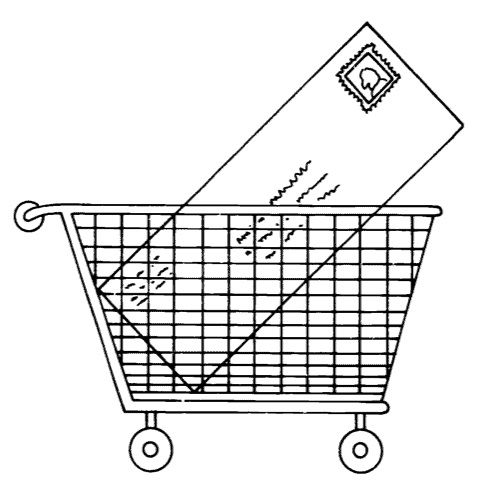The Keyword Method of Learning Second Language Vocabulary
The Keyword Method is a mnemonic device designed to facilitate students’ learning of foreign vocabulary.
In this post, I explore the early origins of the keyword mnemonic method. Then, I explain what a keyword is. Next, I discuss how the keyword approach can be applied to acquire second language vocabulary. Finally, I consider the effectiveness and possible drawbacks of the keyword technique.
Defining mnemonic and “mnemonic devices”
The word mnemonic is derived from the Ancient Greek word μνημονικός (mnēmonikos), meaning of memory or relating to memory. There is also a clear link between the word mnemonic and Mnemosyne - the Greek goddess of memory in Greek mythology.
Essentially, mnemonic devices are learning strategies which serve to enhance the learning process and subsequent recall of information (Jurowski et al., 2015, p.4).
Levin (1980, p.10) points out that mnemonic techniques are generally applied to information that is hard to learn, remember or comprehend.
The Early Origins of the Keyword Method
In his excellent thesis on the Keyword Method, Joern Hauptmann (2004, p.84) writes that the origin of the keyword method is uncertain. However, Hauptmann (ibid.) claims that the first explicit mention of the method is from the middle of the 19th century by J. Bacon for the learning of French vocabulary.
By the mid-1970s, several cognitive psychologists revived fresh interest in the Keyword Method. At the forefront of such renewed interest were Richard Atkinson and Michael Raugh, who reported on the effectiveness of the Keyword Method. When they conducted an experiment into the learning and retention of a Russian vocabulary, Atkinson and Raugh (1975, p.126) described the Keyword Method as a “mnemonic procedure”. Other prominent researchers into the keyword mnemonic at that time include Michael Pressley and Joel R. Levin.
What is a keyword?
First of all, it’s important to define what a keyword is in the context of the Keyword Method.
Atkinson (1975, p.821) defines a keyword as:
... an English word that sounds like some part of the foreign word.
Atkinson (ibid.) goes on to mention that the keyword has no (lexical) relationship to the foreign word apart from the fact that it is similar in terms of sound.
Of course, when Atkinson refers to an “English word”, he really meant a native-language word or phrase. After all, speakers of any native tongue can use the Keyword Method.
Furthermore, when Atkinson (1975, p.821) writes “some part of the foreign word”, it’s useful to add that the keyword usually sounds like the beginning or all of the foreign word.
How does the Keyword Method work?
In question, then, is a two-step mnemonic method.
Step 1:
The first stage requires the subject to associate the spoken foreign word with the keyword.
This association is formed rapidly owing to acoustic similarity. Atkinson (1975, p.821) defined this likeness in sound as an acoustic link.
Step 2:
The second stage requires the subject to form a mental image linking the keyword and the English translation. This mental image is what Atkinson (ibid.) calls an imagery link.
An example of the Keyword Method in action
Levin (1980) illustrates the two steps above with the example of an American student who is attempting to learn the Spanish word carta. Carta means postal letter in English.
So, in the acoustic link stage, the student needs to generate a keyword that:
(a) is a familiar English word;
(b) sounds like a part (not necessarily all) of the foreign word;
(c) ideally, is picturable.
Hence, an obvious keyword for carta is cart (shopping trolley in British English).
In the imagery link stage, the student must form a visual image whereby both the keyword and English translation referents interact in some way. Hence, for carta, the student might visualise a shopping cart transporting a postal letter:

Source: Levin, 1980, p.27
Why is the Keyword Method so effective?
Having established how the Keyword Method works, here are two reasons why the method may be effective for language learners:
1. The chosen keyword does not have to be a single word
It’s interesting to note that the keyword does not have to be a single word (Atkinson, 1975, p.822).
Hence, there is a great deal of flexibility in the choice of keywords. This is due to the fact that any part of a foreign word may be used as the key sound. When it comes to selecting a keyword for a polysyllabic foreign word, it's possible to use anything from a monosyllable to a longer word, or even a short phrase which “spans” the entire foreign word.
Back to Atkinson and Raugh (1975). The authors investigated the application of the Keyword Method to the acquisition of a Russian vocabulary among 52 Stanford university graduates. For the test vocabulary, the testing committee chose 38 keyword phrases rather than single keywords.
Without going too deeply into the statistics, Atkinson and Raugh (1975, p.131) discovered that the probability of learning a keyword-phrase item was roughly the same as the probability of learning a single-keyword item.
2. The Keyword Approach lends itself to bizarre and outrageous interactions in one’s mind
Levin (1980, p.14) isn’t so enthusiastic about the generation of unusual or ‘bizarre’ images when it comes to the effectiveness of a mnemonic system based on imagery:
There is no convincing support for the claim that "bizarre is better."
However, Levin (ibid.) points to research which backs up the claim that “clearly visualised or vivid images are more memorable than weak ones”.
Personally, I think there’s a fine line between vividness and bizarreness. Can’t a vivid image be bizarre and vice versa?
And aren’t all visual images generated by users of the Keyword Method bizarre in some way, shape or form? Is the shopping cart with the postal letter really vivid without a single trace of bizarreness?
Shapiro and Waters (2005), who investigated the cognitive processes underlying the Keyword Method, seem to have warmed to the idea of bizarreness and outrageous visualisation. For the learning of the French word stylo, the authors propose the English keyword steel. One logical visual interaction that the student can play out in their mind is a large pen made of a steel girder.
Then, Shapiro and Waters (2005, p.130) state that this interaction “needs to be played out vividly in the student’s mind”. For instance, the student might envision a famous film star struggling to sign autographs with a huge steel girder which glimmers in the sunlight. The authors, referring to a claim made by psychologist Robert Salso (1998, in Shapiro and Waters, 2005) state that this interaction “may seem silly, but the more outrageous the interaction is, the more effective the method is”.
Hauptmann’s thesis is particularly illuminating when it comes to the relationship between the concept of bizarreness and the keyword technique. In a survey, he asked 48 students “The keywords and the images are frequently rather silly and far-fetched (bizarre). Are you of the (subjective) opinion that this helps learning/retention?”
The results were conclusive:

Source: Hauptmann, 2004, p.66
A decisive majority of the learners were of the opinion that bizarreness assisted in their learning of vocabulary.
Several of Hauptmann’s subjects also showed a preference for strange and funny links when the author interviewed them:
Interview 1 (Hauptmann, p.184)
J= interview
M + F = participants

Interview 2 (Hauptmann, p.189)

What are the possible drawbacks of the Keyword Method?
Let’s take a look at some of the possible drawbacks of the keyword technique, as put forward by prominent researchers in the field of mnemonics.
1. They keyword mnemonic method might not be all it’s cracked up to be when it comes to backward recall
In her article on the keyword strategy, Dr Fiona McPherson, a cognitive psychologist specialising in practical applications of memory research, sheds light on the value of Keyword in regard to forward and backward recall. McPherson makes explicit reference to the recall of the Spanish word carta.
According to McPherson:
The value of the keyword mnemonic is of course, in forward recall — that is ... you learned that carta meant letter. When you see the word carta, the keyword mnemonic will help you remember that it means letter.
Nevertheless, McPherson questions the usefulness of the keyword mnemonic when it comes to recalling the Spanish word for letter.
McPherson responds to the challenge of backward recall by referring to a study (Pressley et al, 1980) which considered the question of forward and backward recall. The keyword mnemonic outperformed other memory strategies for forward recall (remembering the English word when given the Spanish word). However, the Keyword Method didn’t prove to be better nor worse than the other strategies when it came to backward recall (i.e. recalling the Spanish word).
Overall, the biggest challenge is generating the (unfamiliar) Spanish word from the keyword. This task is much tougher than recalling the (familiar) keyword from the Spanish word.
2. Research studies suggest that subjects perform better if an experimenter/teacher provides keywords
In the discussion section of their research study into the acquisition of a Russian vocabulary, Atkinson and Raugh (1975, p.131) ask an important question: Should the experimenter supply the keyword or can the subject generate his own more effectively?
To answer this question, the authors chose to refer to an unpublished Russian vocabulary learning experiment, similar to their own one. Essentially, all subjects were given instruction in the Keyword Method. During the experiment, half of the items were presented for study with a keyword, whereas the other items did not come with a keyword (i.e. subjects had to generate their own keyword).
In that unpublished experiment, the subjects fared better on the keyword supplied items. Generally, instruction in the keyword technique was beneficial, and even more so if the experimenter also provided the keywords. Given that Atkinson and Raugh’s subjects hadn’t received previous training in Russian, the authors conclude that beginners benefit most from keyword supplied items (Atkinson and Raugh, 1985, p.131). Naturally, then, keyword supplied items may be less useful to those who are more experienced with both the target language and the method itself.
All in all, lower level language learners who are intent on becoming more independent in their language learning journey might be better off keeping vocabulary notebooks or resorting to good old-fashioned rote memorisation.
3. Learners may need extended training with the keyword mnemonic method
If subjects in research studies and experiments prefer to lean on their experimenters for keywords (see 2 above), it might be tempting to assume that learners need more protracted training with the keyword mnemonic technique.
It seems that many of the experimental studies of the Keyword Method incorporated training that was too short. For instance, Hall (1988) only spent a total of three hours over a span of four weeks instructing learners in the use of the keyword technique.
Atkinson (1975, p.398) himself concedes that “students should be coached by an expert until they are proficient in the skill.”
4. The Keyword Method may be less effective when it comes to learning abstract nouns, verbs and adjectives in the target language
Dr Fiona McPherson highlights that:
The weight of the evidence is probably against the view that the [keyword] mnemonic should be restricted to concrete words, but it may well be more difficult to come up with good, concrete images for abstract words.
Unfortunately, researchers tend to use concrete words (which are easily imageable). Very few studies have compared both concrete and abstract words.
Hauptmann (2004, p.63) writes that it is possible to make use of a technique whereby the keyword sounds like the target (abstract) word. For the target word unconscious, the author proposes the keyword Conan, as in Conan the barbarian (Arnold Schwarzenegger in a film). This leads to the image that Conan hits a learner unconscious. Despite such frivolity with the keyword mnemonic method, the fact remains that the learner would have to expend a great deal of cognitive effort to recall a single abstract word.
Atkinson (1975), who along with members of the Slavic Languages Department at Stanford, developed a vocabulary-learning program designed to supplement the second-year course in Russian. It’s telling that, during interviews held at the end of the program, students reported that the Keyword Method worked least well for adjectives. Of course, there is a greater possibility that adjectives are abstract in nature.
5. It’s not always possible to come up with a phonetically similar keyword
I’ve already established that the keyword should be phonetically similar, although not necessarily identical, to the target word in the second language.
It’s safe to assume that it’s easier to apply the Keyword Method when two languages are from the same language group, as with English and German (both West Germanic languages). Even though they’re not from the same language group, French and English also have a great deal in common in a phonetic sense.
However, how useful is the Keyword Method for speakers of English trying to attain a Slavic language vocabulary, and vice versa?
When it comes to the acquisition of a Russian vocabulary, Atkinson and Raugh (1975, p.132) hint at “Poor performance on a given item in the keyword condition” due to either a poor acoustic link, weak imagery link or both. Therefore, the authors’ subjects did have some difficulties due to phonetically ineffective keywords.
In fact, let’s check out a sample of items from the Russian vocabulary with related keywords (in Atkinson and Raugh, 1975, p.128):

I don’t have to be an expert in Russian to recognise that some of the keywords are phonetically dissimilar to their mother tongue equivalents. For instance, chelovek is certainly not phonetically akin to the keyword chilly back.
My brief experience with applying the Keyword Method to the learning of Polish vocabulary
Some time ago, I attempted to learn car parts in the Polish language using the keyword mnemonic technique.
It was a fruitless task because so many combinations of letters in Polish are phonetically dissimilar to those you’d find in English.
For example, the Polish word for bumper is zderzak. I’m still racking my brains as to how to come up with a remotely viable keyword item in English that sounds like either zde or rzak.
I also think that one is immediately drawn to associating the first syllable of the target language word with a potential keyword. Certainly, I found it difficult to look further than the first syllable when trying to acquire Polish vocabulary for car parts.
Conclusion
Just because I listed more disadvantages of the keyword mnemonic method than advantages, it doesn’t mean that this strategy is ineffective.
I may have adopted a pessimistic tone when it comes to the acquisition of Polish vocabulary. However, it requires a great deal of persistence, practice and patience to apply the Keyword Method even when phonetic dissimilarities between the target word and the keyword cause frustration.
The keyword strategy, as McPherson states, is “probably best used selectively, perhaps for particularly difficult items”. This sentiment is also shared by Pavičić Takač (2008, p.80).
All in all, the Keyword Method does not guarantee long-term vocabulary retention (Pavičić Takač, 2008, p.80). The language learner and language teacher should put their eclectic hats on. This is because the keyword strategy perhaps should go hand in hand with other language learning strategies, such as vocabulary notebooks. The Keyword Method, alone, cannot reveal a word’s most salient contextual, syntactic, lexical and grammatical features. This is why I store all of my language learning information in a Word-Phrase Table.
References
Atkinson, R.C., (1975). Mnemotechnics in second-language learning. American Psychologist, 30(8), 821–828.
Atkinson, R.C, and Raugh, M.R. (1975). An Application of the Mnemonic Keyword Method to the Acquisition of a Russian Vocabulary, Journal of Experimental Psychology: Human Learning and Memory, 104 (2), 126-133
Hall, J.W. (1988). On the utility of the keyword mnemonic for vocabulary learning. Journal of Educational Psychology, 80, 554-562.
Hauptmann, J., (2004). ‘The Effect of the Integrated Keyword Method on Vocabulary Retention and Motivation’, PhD thesis, University of Leicester, Leicester
Jurowski, K., Jurowska, A., and Krzeczkowska, M. (2015). Comprehensive review of mnemonic devices and their applications: State of the art, International e-Journal of Science: Medicine and Education, 9 (3), 4-9
Levin, J.R., (1980). The Mnemonic ‘80s: Keywords in the Classroom, Wisconsin Univ.Madison. Research and Development Center for Individualized Schooling, Theoretical Paper No.86, 1-57
McPherson, F. (no date). 'Using the keyword method to learn vocabulary'. Available at:
https://www.mempowered.com/mnemonics/language/using-keyword-method-learn-vocabulary
Pavičić Takač, V. (2008). Vocabulary Learning Strategies and Foreign Language Acquisition, Clevedon, UK: Multilingual Matters Ltd
Shapiro, A.M., and Waters, D.L. (2005). An investigation of the cognitive processes underlying the keyword method of foreign vocabulary learning, Language Teaching Research, 9(2), pp.129-146



